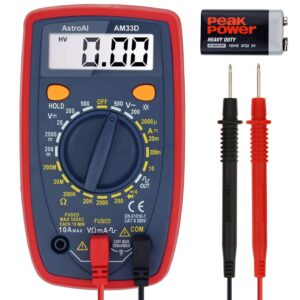
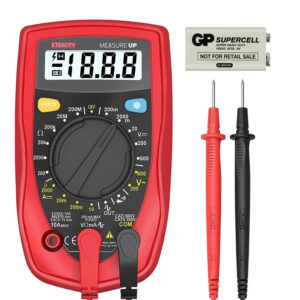
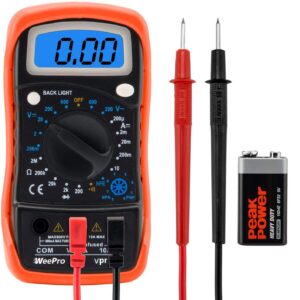

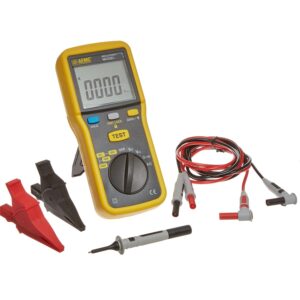
Customer’s Choice: the Best Rated Ohm Meters
[survey_answers id=”1773341671″ style=”plain” data=”score”] users answered this survey. Please help us improve this review!
[survey_answers id=”1773341671″ style=”piechart” legend=”true”]
Some tools are essential for electricians and DIYers. For electrical line testing, you need the most suitable device. The talk is about an ohmmeter. This is a primary diagnostic tool for most household and auto electrical issues. Also, it may cope with dead batteries, faulty sockets, atomizers and vaporizers.
What does an ohmmeter do?
An ohmmeter is important for calculating electrical equipment and systems. It tests electric resistance in Ohms to fix specific electrical issues.
You may use this tool to read accurate resistance values. This allows you to pinpoint the exact area where electrical work is needed. Second, the test is done with all the necessary safety.
An ohmmeter has a set of prongs for recording electronic feeds. The prongs are susceptible to differences in resistance. The screen sends data to the computer.
It tests resistance, represented as ohms, among other criteria. The problem is that there are many different ohmmeters in the market. You can skip straight to the best pick as the experts researched for you. A quick buying guide and comparison table are included. One must consider various factors like alarms, probes, range, display resolution, input resistance, etc.
AstroAI Digital Multimeter Voltage Tester– the best for testing DC!
 Using this strong AstroAI tester, you can now reliably and safely measure DC, voltage, resistance, continuity, and diode, among others.
Using this strong AstroAI tester, you can now reliably and safely measure DC, voltage, resistance, continuity, and diode, among others.
More surprisingly, the tester is suitable for diagnosing automobile and electrical problems in the home. With the sampling speed of 2 times per second, as anticipated, it delivers excellent and fast performance. On all stages, it has overload security and is thus suitable for a broad variety of activities.
Pros
- Quite accurate;
- Easy to use;
- Includes a user-friendly manual;
- Auto shutdown;
- A rubber sleeve;
Cons
- Won’t test AC;
- Bad wire protection;
At the end of a multimeter, rubber safety grips are placed and remain at the rear to support the ohmmeter all the time. Overload safety, continuity buzzer, and low battery indication are also included.
Etekcity Digital Multimeter– the best for beginners!
 A handheld unit is used to calculate resistance, current, voltage. Also, it is picked to assemble, restore and diagnose the circuits. This is an everyday digital ohmmeter with standard ranges of voltage, current, and resistance.
A handheld unit is used to calculate resistance, current, voltage. Also, it is picked to assemble, restore and diagnose the circuits. This is an everyday digital ohmmeter with standard ranges of voltage, current, and resistance.
There is an attractive display that updates with a speed of 3 times per second. The large dial is easy to operate.
It has overload security. A rubber cap for preventing damage from the drop and falls are also included.
Pros
- Auto-range;
- Safety protection;
- Ease of use;
- 9V battery included;
Cons
- Only manual range;
- Limited measuring capacity;
- No AC measuring;
The tool by Etekcity is ideal for beginners, mechanics, and electricians. This multimeter can test the functioning of the diode and transistor.
WeePro Vpro850L Digital Multimeter– the best for versatility!
 There are safety features like overload security and low-power alerts. The blue and black display is simple to read and has an automatic backlight option for you.
There are safety features like overload security and low-power alerts. The blue and black display is simple to read and has an automatic backlight option for you.
Pros
- Rubberized for drop protection;
- Includes a transistor testing feature;
- High Ohm rating;
- Lifetime warranty;
- Overload protection;
Cons
- Hard to use;
- Interface could be better;
From all the choices available, the Vpro850L is one of the best ohmmeters out there. This device is made from plastic and is designed to last for years.
LEAGY VICTOR VC60B+ Digital Insulation Resistance Tester– the best for resistance range!
 The VC60B+ features a big, convenient, backlit LCD screen and unit symbol LCD. It has a low-battery consumption, a high-voltage, short-circuit and overload protection input. It automatically powers off.
The VC60B+ features a big, convenient, backlit LCD screen and unit symbol LCD. It has a low-battery consumption, a high-voltage, short-circuit and overload protection input. It automatically powers off.
Pros
- Large LCD;
- Auto shutdown;
- Low power consumption;
Cons
- The battery is not included;
- Poorly written instructions;
The Victor VC60B+ tool is used to monitor insulation tolerance in electronics, mechanical, and electrical cables.
AEMC 2126.53 Digital Megohmmeter– the best for features!
 For clients who are trying to save capital, this model from AEMC is an outstanding alternative. By using this unit, you have an option of three isolation test voltages: 250 V, 500 V, and 1000 V. As for resistance, the tool will weigh between 1 kΩ and 4000 MΩ.
For clients who are trying to save capital, this model from AEMC is an outstanding alternative. By using this unit, you have an option of three isolation test voltages: 250 V, 500 V, and 1000 V. As for resistance, the tool will weigh between 1 kΩ and 4000 MΩ.
Pros
- Easy to use;
- Great cables;
- Affordable;
- Lightweight;
Cons
- Flimsy;
- Low Ohm rating;
This model is also one of the lightest ohmmeters in its price range, and weighs only 24 oz. If you need something compact that you can conveniently bring to your job with you, then you should have no problem bringing around this tester.
The Buyer’s Guide
Auto-range design
You need to figure out the specific resistance you want to assess. A multimeter with the auto-range design usually locates a zone’s electric resistance. It will save you time and increase accuracy.
Also, an auto-range ohmmeter will automatically select the desired measuring range and display it on the screen. You have to turn the knob for each component and value every time you want to change it. An auto-range tool is best when performing most tasks.
The digital display comes with an LCD screen for showing the measurements. It allows users to download the data onto a desktop.
Display
A large display is good if it is LCD. Such a display will provide you reliable data. You should be able to read the tiny numbers from a long distance and in the dark time.
Alarm
Low power alarm and high voltage features could be ideal for every ohmmeter. When you measure, an alarm sounds.
Probe
As it decides how quick and effective the test can be, a probe is an essential part of any ohmmeter. Some function by touch, whilst others need to understand the item you’re weighing. What is crucial is that it is delicate and tends to facilitate fast readings. The method of research must be hassle-free, and this depends on the in-built probe.
Input impedance
The impedance of the input corresponds to the predicted effect on a circuit by an ohmmeter. If the impedance of the input is low, the resistance of the device can decrease, contributing to ghost voltage registration and false reading. Therefore, go for high impedance so the voltage would not mess with it, resulting in specific readings.
Other useful features
The LED backlit, data hold, auto shut, and a hanging strap provide outstanding performance if the tool has these features. It is the key price determinant in most ohmmeters, and you have to take into account them carefully. You should compare the product specs to see which features are helpful to you.
See other uses like how to test your car alternator.
Video Tutorial: AstroAI Multimeter Review
Final thoughts
Hopefully, you can appreciate ohmmeters better thanks to this guide. When considering these top picks, compare them well and use the buyer’s guide to make a final decision. It is best to buy an ohmmeter that gives clear and legible readings.

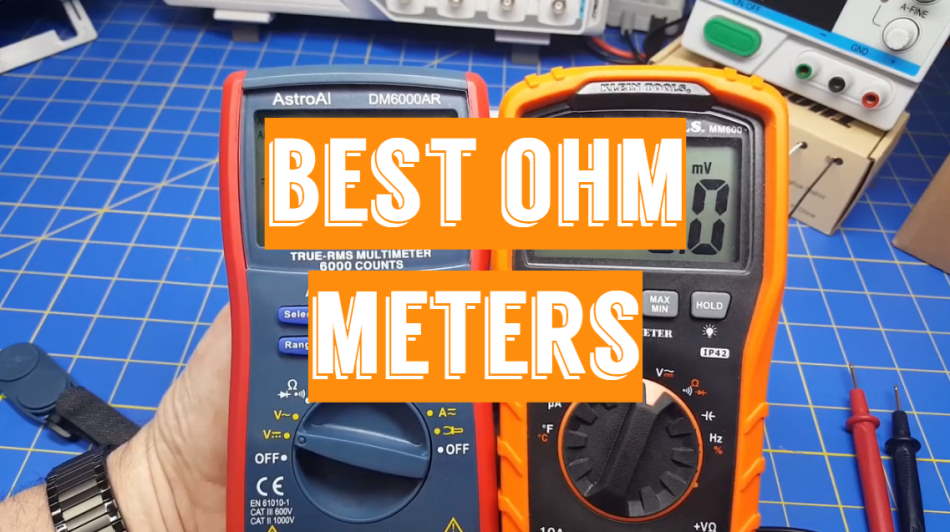

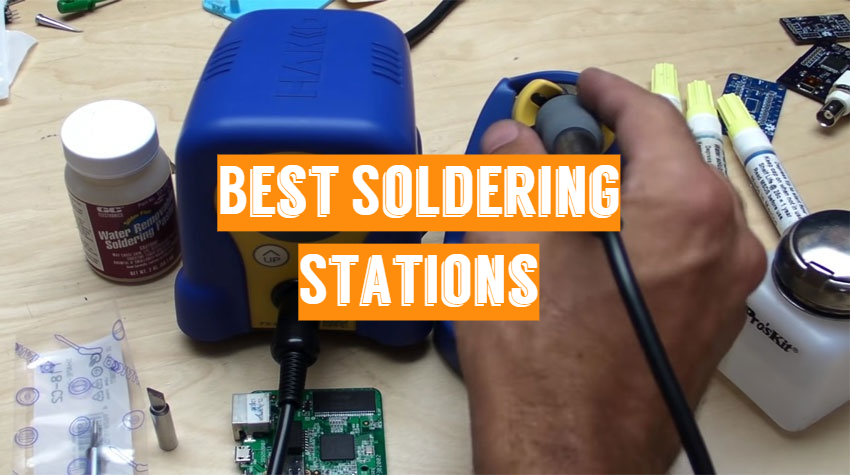
What about low ohm meters? A measurement of fewer than 1.000 ohms is referred to as a low resistance reading. Many low resistance ohmmeters have a resolution of 0.1 micro-ohms or less in the lower range. This is the level at which you can conduct various low-resistance tests with an ohmmeter.
The four-wire (Kelvin sensing) connection approach is a technique for detecting a low resistance. These readings can be done with a DMM, micro-ohm meter, or a separate current source and voltmeter.
Thanks for your comment, Gavin!